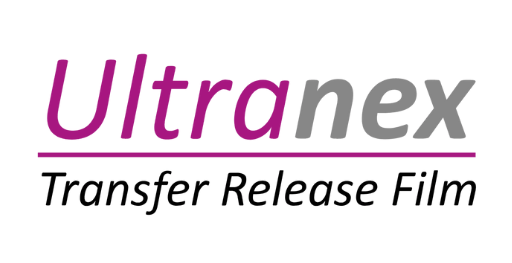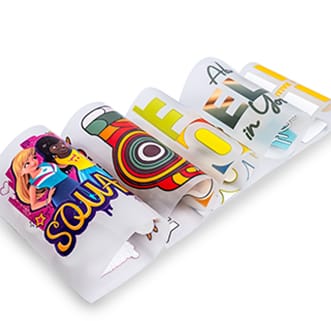A3 DTF Film Roll: Everything You Need to Know
In the world of textile and garment printing, innovation never slows down. Among the most exciting technologies making waves in custom apparel printing is DTF (Direct to Film). Within this space, the A3 DTF film roll stands out as a preferred choice for designers, businesses, and DIY creators who want high-quality prints with ease and efficiency. Whether you’re just starting out or are a seasoned pro, this detailed blog will walk you through everything you need to know about A3 DTF film roll, including its features, advantages, uses, and tips for best results. What is A3 DTF Film Roll? The A3 DTF film roll is a type of transfer film specifically designed for Direct to Film printing technology. It comes in an A3 size, which measures 11.7 × 16.5 inches (297 × 420 mm), and is often available in roll or sheet formats. These rolls are coated with a special material that allows printed designs to be transferred easily and cleanly onto various fabrics using heat and adhesive powder. Unlike traditional screen printing or heat transfer vinyl (HTV), DTF allows for vibrant, full-color designs to be printed on nearly any fabric without weeding, cutting, or color limitations. The A3 size is ideal for medium-sized graphics, logos, chest prints, and multi-placement designs. Key Features of A3 DTF Film Roll Here are the main features that make A3 DTF film roll a popular choice in the garment printing industry: Why Choose A3 Size in DTF Printing? When choosing between A4, A3, and A2 sizes, many professionals prefer the A3 DTF film roll for several reasons: For small businesses and growing custom t-shirt brands, this size strikes the right balance between cost-effectiveness and performance. Applications of A3 DTF Film Roll The A3 DTF film roll is incredibly versatile and can be used across multiple industries and apparel types, including: Because DTF works on cotton, polyester, blends, leather, nylon, and more, the possibilities are endless. How to Use A3 DTF Film Roll: Step-by-Step Process Using an A3 DTF film roll requires specific steps to achieve a perfect transfer: Step 1: Design and Print Create your design using software like Photoshop or Illustrator. Once ready, mirror the image and print it on the matte side of the A3 DTF film using DTF inks. Step 2: Apply Adhesive Powder While the ink is still wet, sprinkle DTF adhesive powder evenly over the printed design. Shake off the excess powder. Step 3: Cure the Film Cure the adhesive powder using a heat press, oven, or curing station at around 160°C for 2–3 minutes, until the powder melts evenly. Step 4: Transfer to Fabric Place the film over your fabric and press it using a heat press machine at 160–170°C for 10–15 seconds. Step 5: Peel Off the Film Wait for the film to cool down if you’re using cold peel, or peel immediately for hot peel films. A smooth, vibrant design will be left on the fabric. Benefits of A3 DTF Film Roll Here’s why more and more businesses are switching to A3 DTF film rolls: 1. Cost-Effective for Small to Medium Orders No need for screens, plates, or large setup costs. Perfect for custom orders and limited runs. 2. No Fabric Limitations Works on all types of fabrics—cotton, polyester, blends, silk, nylon, etc.—with excellent results. 3. No Weeding Required Unlike HTV, there’s no need to cut out designs manually. Save time and effort. 4. Durable and Wash-Resistant Transfers from A3 DTF film rolls are highly durable and can withstand 30–50+ washes without fading or cracking. 5. Low Setup, High Return Startups can begin with a small A3 DTF printer setup and scale easily as orders grow. Tips for Best Results with A3 DTF Film Roll To get the most out of your DTF printing: DOWNLOAD TECHNICAL DATA SHEET Choosing the Best A3 DTF Film Roll Supplier Not all A3 DTF film rolls are made equal. When choosing a supplier, consider the following: At Ultranex DTF, we provide top-quality A3 DTF film rolls that meet the professional standards of apparel decorators and hobbyists alike. Our films are engineered to offer crisp color clarity, ease of use, and long-lasting durability. Who Should Use A3 DTF Film Roll? This product is ideal for: Final Thoughts The A3 DTF film roll is transforming how small and medium-scale garment decorators bring custom designs to life. It delivers vibrant, durable prints with minimal hassle—no more cutting vinyl, aligning layers, or being limited by fabric types. With the right tools and high-quality A3 film rolls, your prints can go from basic to bold in minutes. Whether you’re running a bustling print shop or just exploring the world of custom apparel from home, investing in A3 DTF film roll technology is a smart move for 2025 and beyond. Let your designs shine, and bring your creative vision to life with every print. Ready to upgrade your printing game?Explore our premium A3 DTF film rolls at UltranexDTF.us and unlock next-level garment printing today! Visit our shop page for A3 Dtf Film Roll – Shop now
A3 DTF Film Roll: Everything You Need to Know Read More »








